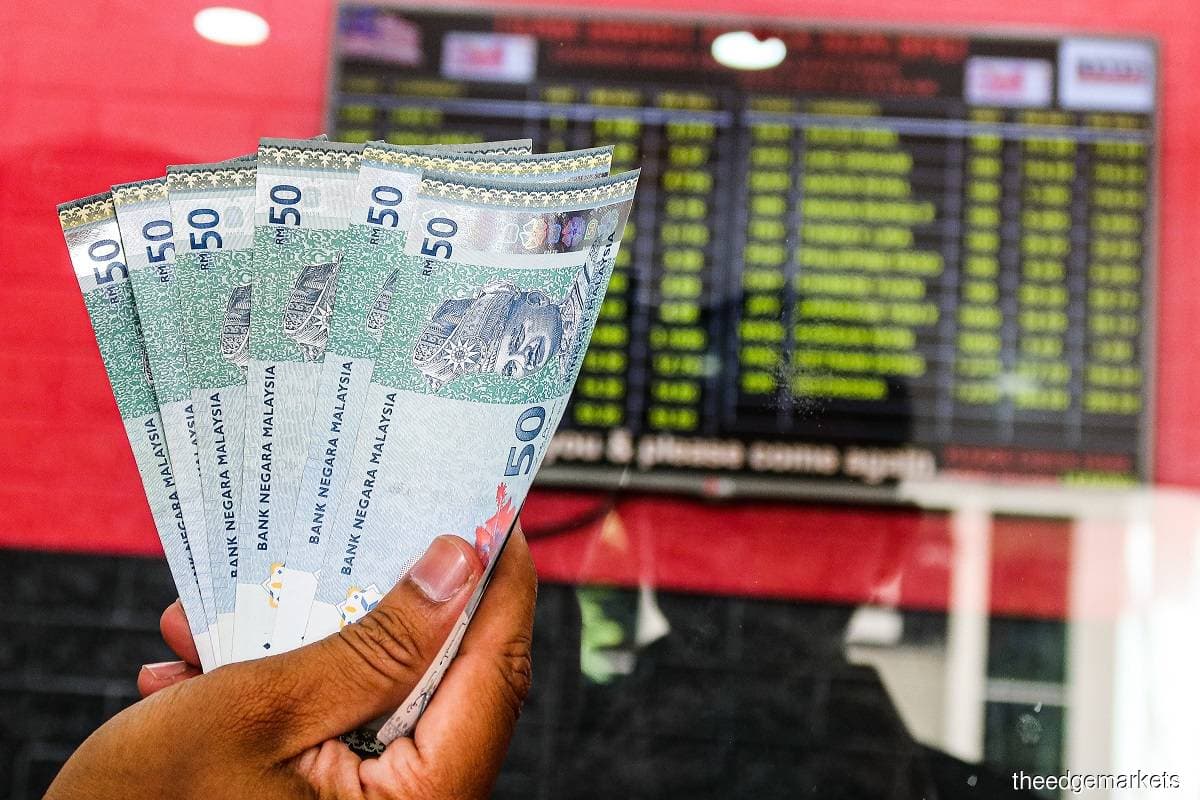
KUALA LUMPUR (June 13): The ringgit weakened past 4.41 against a strengthening US dollar on Monday (June 13) after the US reported last Friday that May 2022 inflation accelerated at a faster-than-expected month-on-month pace of 1%. Compared with a year earlier, US inflation, as measured by the consumer price index, rose 8.6%.
Such sentiment led to anticipation of more aggressive US interest rate hikes to fight inflation.
At 5pm, the ringgit depreciated 0.39% to 4.4187 against the greenback from the previous close of 4.4015 last Friday. The local currency touched an intraday low of 4.4198.
Over the last one year, the ringgit has traded at between 4.1125 and 4.4198 against the US dollar, which is strengthening due to demand for the US dollar by investors who intend to capitalise on higher returns from their investments in anticipation of US interest rate hikes.
The US Dollar Index, which measures the value of the US dollar against a basket of foreign currencies, rose 0.62% to 104.77.
"US dollar strengthened as Fed (US Federal Reserve) remains hawkish," MIDF Amanah Investment Bank Bhd's strategy team wrote in a note.
Looking back, MIDF said the US dollar appreciated against major currencies last week as the US Dollar Index rose 2% to a three-week high of 104.15.
"The stubbornly high [US] inflation in May-22 led to increased expectations for the Fed to remain aggressive to tighten its monetary policy in the upcoming meetings.
"Following the broad strength in US dollar, ringgit and other regional currencies also depreciated last week. Ringgit weakened to RM4.402, back to the level last seen in Mar-20," MIDF said.
Meanwhile, the World Bank Group said the impact of rising interest rates in the US is expected to be less severe for Malaysia compared with other East Asia and Pacific (EAP) countries due to factors including Malaysia's flexible exchange rate and large international reserves.
"Financial tightening shocks emanating from the US can have negative spillovers to output in the broader EAP region, including Malaysia. However, Malaysia has several factors in its favour that tend to reduce the severity of such shocks due to its flexible exchange rate, low US dollar-denominated external debt (0.9% of gross domestic product), large international reserves (US$115.6 billion or 5.9 months of import cover), and a deep domestic institutional investor base.
"[Economic] recovery prospects are also promising, with the economy opening up, and with higher commodity prices. BNM's (Bank Negara Malaysia) recent increase of its policy rate also builds more monetary space in the event of future adverse shocks. On the other hand, Malaysia's narrowing fiscal space limits the government's ability to cushion the impact of any new negative shocks," the World Bank said in its June 2022 Malaysia Economic Monitor report.
Meanwhile, Bank Islam Malaysia Bhd chief economist Dr Mohd Afzanizam Abdul Rashid said earlier on Monday the ringgit is expected to remain weak on Monday as the Fed's Federal Open Market Committee (FOMC) members will likely maintain a hawkish stance when they meet on Tuesday and Wednesday (June 14 and 15).
"The FOMC meeting this week is also crucial because the Fed staff will share their latest quarterly forecast.
"So, it's going to be a weak ringgit this week along with other regional currencies due to a stronger US dollar," he told Bernama.
The ringgit also weakened against other major currencies on Monday. At 7pm, the local unit depreciated 0.26% against the Singapore dollar at 3.1802, by 0.94% against the euro at 4.6218, and by 1.82% against the Australia dollar at 3.0771.